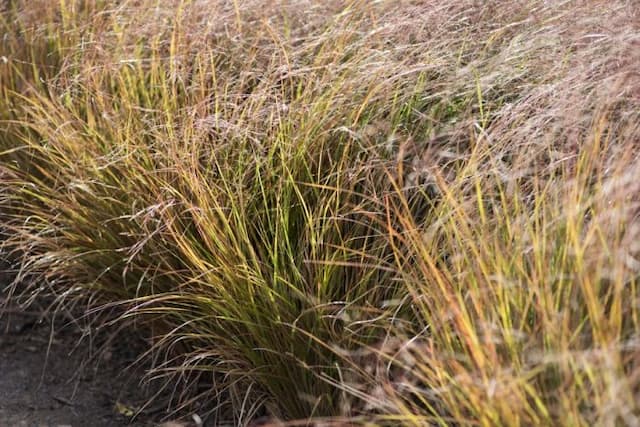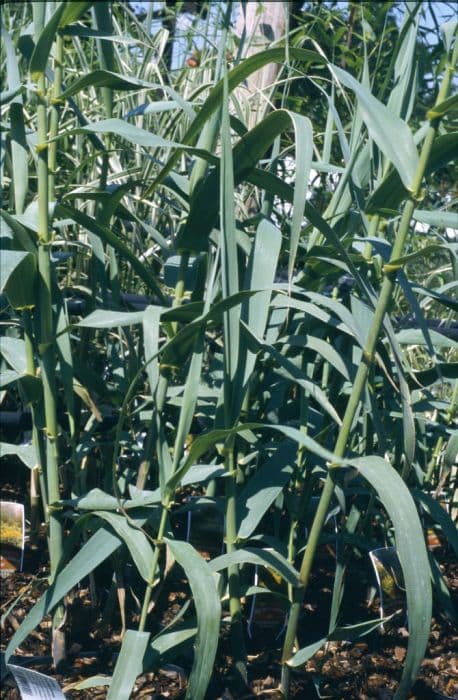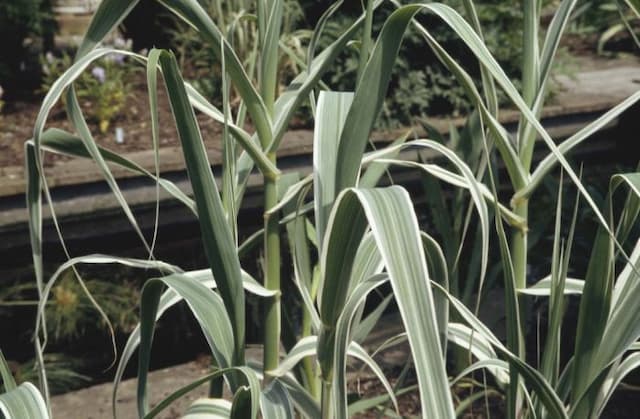Maiden Grass Miscanthus sinensis 'Gold Bar' (PBR) (v)

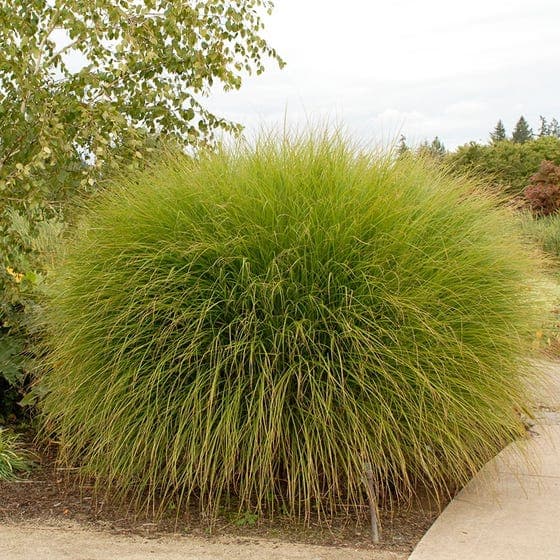
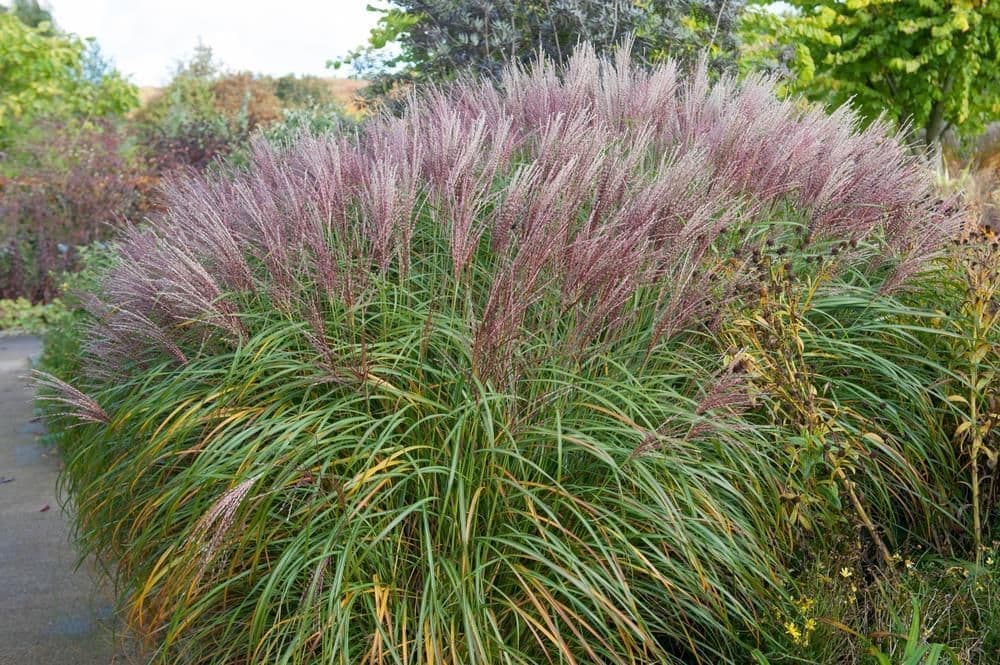

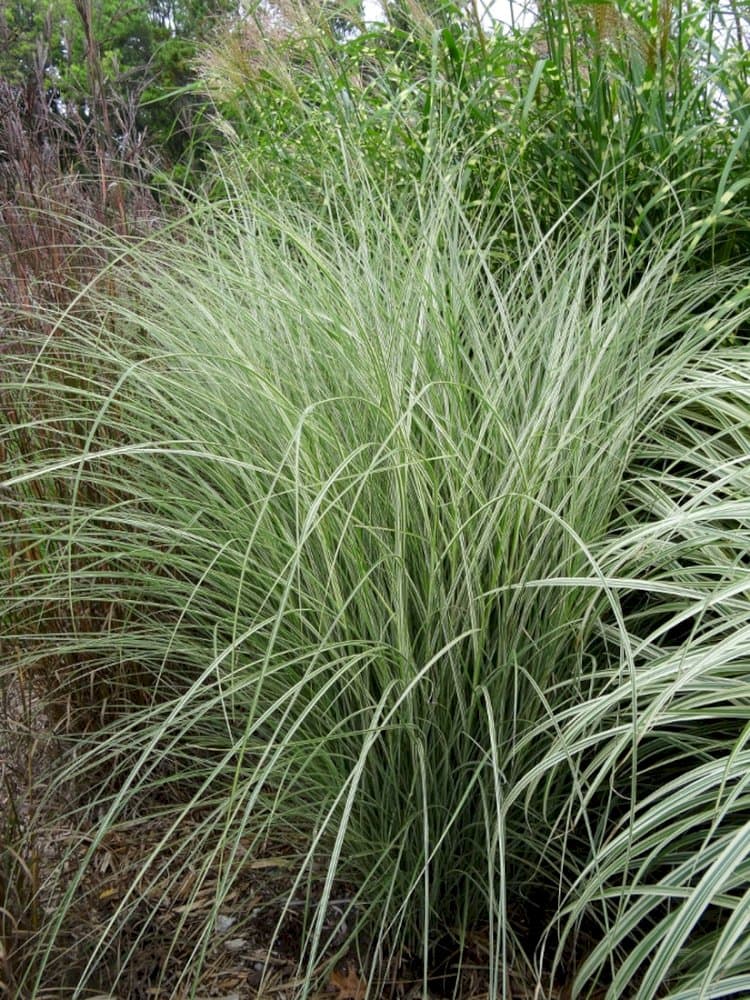
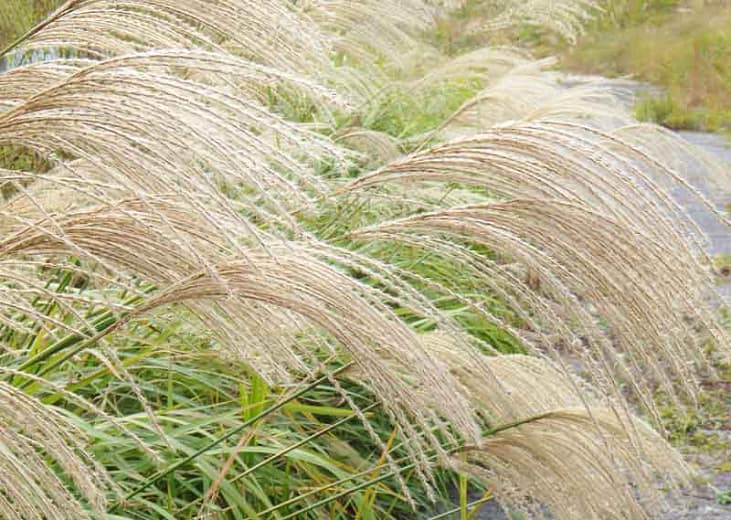
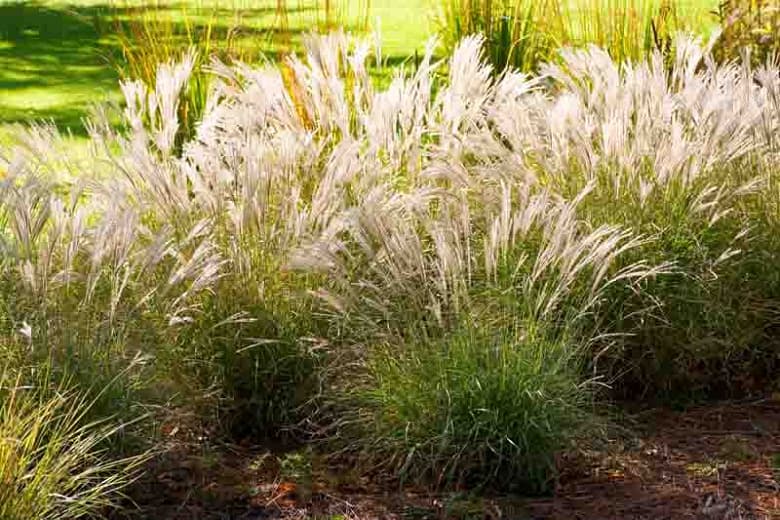

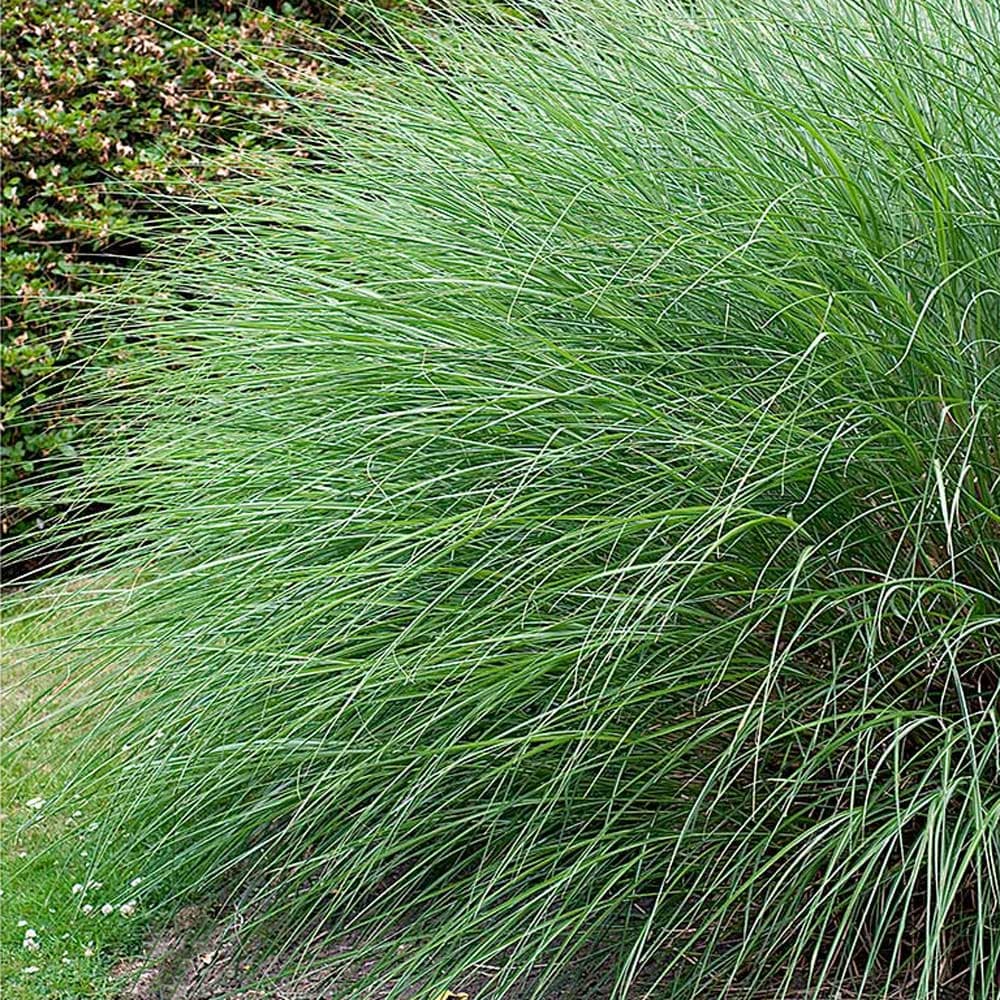
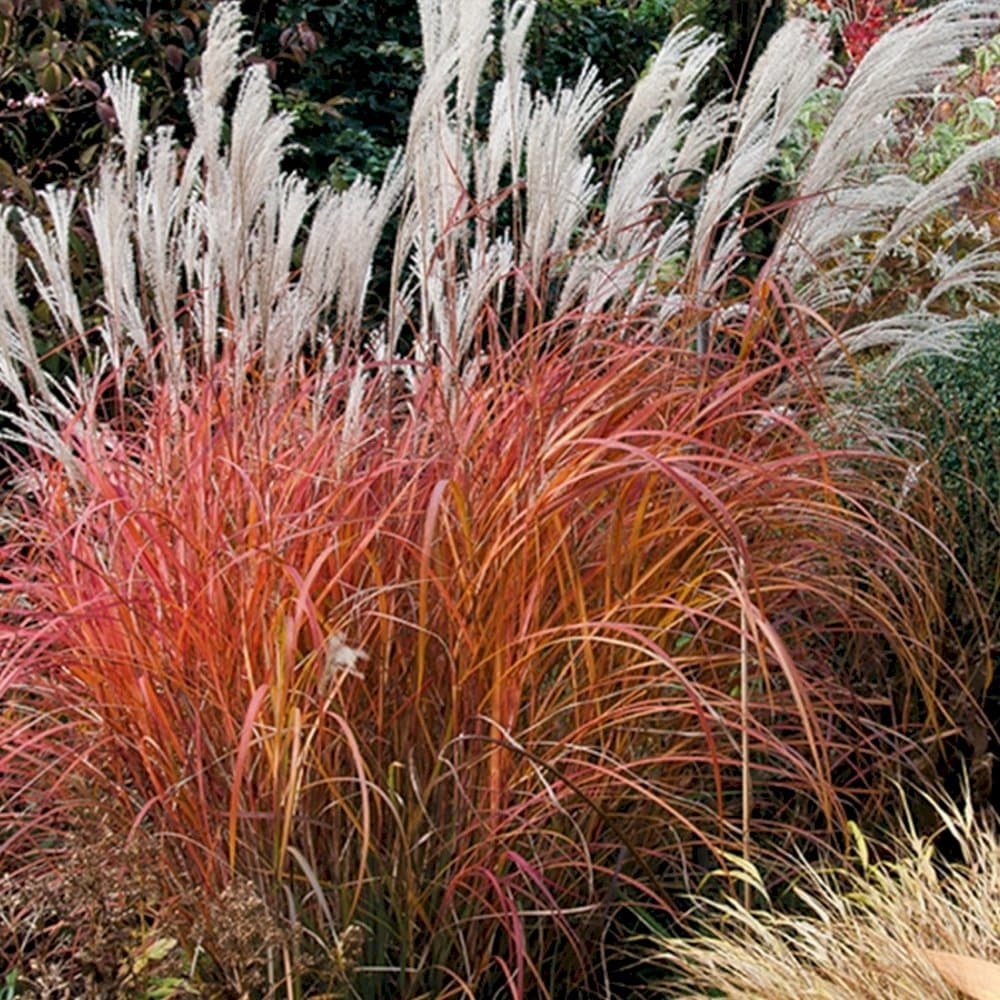
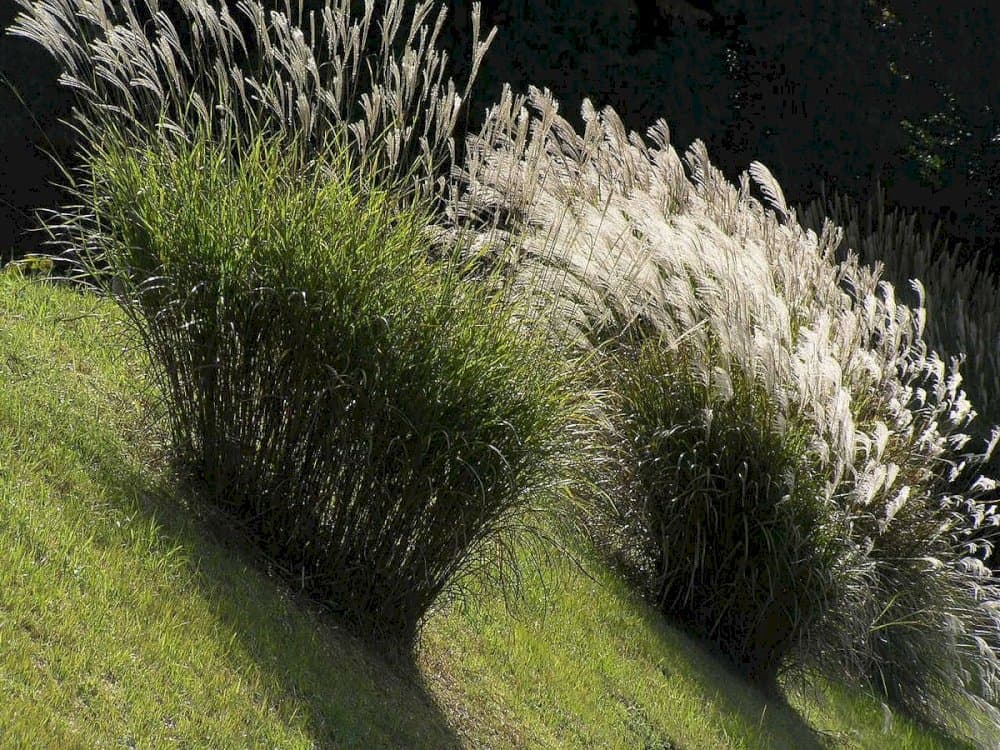
ABOUT
The plant commonly known as Miscanthus 'Gold Bar', displays a striking appearance characterized by its distinctive vertical variegation. Each of its slender leaves is marked with broad, horizontal gold bands that alternate with a deep green color, creating a vivid contrast that is both eye-catching and ornamental. This variegation pattern is recurrent and consistent throughout the foliage, giving the plant a bold and patterned look. The leaves emerge upright, forming a clumping shape that adds texture and structure to garden settings. During certain times of the year, feathery flower plumes may rise above the foliage, adding an additional layer of interest. These plumes usually appear in a soft color that gently contrasts with the boldly variegated leaves. Overall, Miscanthus 'Gold Bar' has a lush and vibrant appearance that can serve as a focal point in garden designs or can be used to create visually stimulating borders or screens.
About this plant
 Names
NamesFamily
Poaceae
Synonyms
Japanese Silver Grass, Maiden Grass, Zebra Grass, Eulalia, Porcupine Grass
Common names
Miscanthus sinensis 'Gold Bar' (PBR) (v).
 Toxicity
ToxicityTo humans
Maidenhair Grass is the common name for Miscanthus sinensis 'Gold Bar'. There are no widely recognized or reported toxic effects of Maidenhair Grass on humans if ingested. Generally, this ornamental grass is considered safe and non-toxic. However, it is still not advisable to consume any part of this plant, as it is not intended for human consumption, and individual allergic reactions or physical responses can occur.
To pets
Maidenhair Grass is the common name for Miscanthus sinensis 'Gold Bar'. This ornamental grass is not known to be toxic to pets, and there are no reported cases of poisoning in pets such as dogs and cats from ingesting this plant. As with any non-food plant, ingestion of large quantities could potentially cause gastrointestinal upset or an intestinal blockage, especially in smaller animals. Therefore, while not toxic, it's still best to prevent pets from consuming this plant in significant amounts.
 Characteristics
CharacteristicsLife cycle
Perennials
Foliage type
Deciduous
Color of leaves
Variegated
Height
4-5 feet (1.2-1.5 meters)
Spread
2-3 feet (0.6-0.9 meters)
Plant type
Grass
Hardiness zones
5-9
Native area
Asia
Benefits
 General Benefits
General Benefits- Aesthetic Appeal: Adds visual interest to landscapes with its striking gold and green banded foliage.
- Ornamental Grass: Popular in gardens for its graceful form, texture, and movement.
- Low Maintenance: Requires minimal care once established, making it ideal for low-maintenance landscaping.
- Drought Tolerance: Has the ability to withstand periods of low water availability.
- Cold Hardiness: Can survive in colder climates, making it suitable for a range of gardening zones.
- Fast Growing: Exhibits rapid growth which can be beneficial for quickly establishing an area or creating privacy screens.
- Year-Round Interest: Provides visual interest throughout the seasons, especially in autumn when the foliage turns reddish and in winter with its dried seed heads.
- Erosion Control: Ideal for stabilizing soil and preventing erosion due to its dense root system.
- Wildlife Habitat: Attracts birds which may use the plant for shelter and as a food source.
- Diversity in Garden Design: Offers unique patterning and color, adding diversity to planting schemes.
 Medical Properties
Medical PropertiesThis plant is not used for medical purposes.
 Air-purifying Qualities
Air-purifying QualitiesThis plant is not specifically known for air purifying qualities.
 Other Uses
Other Uses- As a privacy screen: Miscanthus sinensis 'Gold Bar' grows tall and dense, making it an excellent natural screen for added privacy in gardens or along property lines.
- As a sound barrier: The thick foliage can help to dampen noise pollution, making it suitable for planting along roads or highways to reduce traffic noise.
- For erosion control: The robust root system of Miscanthus sinensis 'Gold Bar' helps to stabilize soil on slopes and prevent erosion.
- As a windbreak: Its height and density can be used to protect smaller plants from strong winds or to shield outdoor living areas.
- Biofuel production: As a high-yield grass, Miscanthus sinensis 'Gold Bar' has potential as a source for biofuel production.
- In crafting: Dried stalks of Miscanthus sinensis 'Gold Bar' can be used in floral arrangements, wreaths, or other decorative crafts.
- For biomass: It can be cultivated for biomass production, providing an organic material that can be converted into energy.
- Livestock bedding: Dried Miscanthus can be used as a sustainable bedding material for livestock due to its absorbency and softness.
- Photography backdrop: The ornamental grass provides a textured and visually interesting backdrop for outdoor photography.
- Garden structure: The stiff, upright growth habit of Miscanthus sinensis 'Gold Bar' can add architectural interest to the garden landscape throughout the year.
Interesting Facts
 Feng Shui
Feng ShuiThe Maiden Grass is not used in Feng Shui practice.
 Zodiac Sign Compitability
Zodiac Sign CompitabilityThe Maiden Grass is not used in astrology practice.
 Plant Symbolism
Plant Symbolism- Adaptability: Miscanthus sinensis, also known as Maiden Grass, can thrive in various climates and conditions, symbolizing the ability to adapt and succeed in different environments.
- Growth: The plant's growth habit, reaching upwards and outwards, signifies personal growth, progress, and reaching for new heights.
- Privacy: With its dense growth habit, Maiden Grass is often used for privacy screens, reflecting the idea of creating boundaries and personal space.
- Resilience: This grass is known for its tough nature, representing resilience and perseverance through adversity.
- Temporal Beauty: The plant has distinct seasonal changes, with foliage that turns striking colors in autumn, symbolizing the transient but beautiful nature of life's various phases.
 Water
WaterMaiden Grass should be watered deeply once a week, providing about 1 to 1.5 inches of water each time, which translates to around 0.6 gallons per square yard of soil. During the hotter summer months, you may need to water twice a week, especially if you're experiencing drought conditions or if the grass is planted in a very sunny spot. In the cooler seasons or during periods of rain, reduce the frequency of watering to prevent waterlogging, which this plant does not tolerate well. Always check the soil moisture before watering – it should be moist, not saturated. During winter, watering is generally unnecessary, unless the weather is unusually dry for an extended period of time.
 Light
LightMaiden Grass thrives best in full sun conditions where it receives at least 6 hours of direct sunlight daily. An ideal spot would be in an open area, away from large trees or buildings that could create significant shade. This plant can tolerate some light shade, particularly in the hotter afternoon hours, but too much shade can lead to reduced vigor and less dense foliage.
 Temperature
TemperatureMaiden Grass grows optimally in temperatures ranging from 75°F to 90°F. It can survive minimum winter temperatures down to about -20°F, but growth will be hampered if temperatures consistently fall below 50°F. This grass is quite adaptable to different climates as long as the temperature extremes are within this range, ensuring healthy growth throughout the growing season.
 Pruning
PruningMaiden Grass should be pruned in late winter or early spring before new growth begins. Pruning is done to remove old foliage, promote healthy new growth, and maintain an attractive shape. It is often cut back to a few inches above the ground. The best time for pruning is just as the frost season ends, ensuring that the plant is ready to start its growing cycle with fresh vigor.
 Cleaning
CleaningAs needed
 Soil
SoilMaiden Grass 'Gold Bar' thrives in well-drained soil with a good mix of organic matter. A soil pH range of 5.5 to 6.5 is optimal. Incorporate compost and loamy soil to provide nutrients and improve drainage.
 Repotting
RepottingMaiden Grass 'Gold Bar' typically does not require frequent repotting. It should be repotted every 3 to 4 years to refresh the soil and accommodate root growth.
 Humidity & Misting
Humidity & MistingMaiden Grass 'Gold Bar' prefers moderate humidity levels but is quite adaptable and can tolerate a range of humidity conditions typically found outdoors.
 Suitable locations
Suitable locationsIndoor
Place in bright light, ensure good air circulation.
Outdoor
Full sun, well-drained soil, space clumps.
Hardiness zone
5-9 USDA
 Life cycle
Life cycleThe 'Gold Bar' Miscanthus, commonly known as Eulalia 'Gold Bar', begins its life cycle when seeds are sown or when it is propagated through division in late spring or early summer. It emerges as small shoots from rhizomes and develops into a clump of upright stems with distinctive gold and green barred foliage. During the growing season, the grass matures and can reach up to 4-5 feet tall, producing feathery flower plumes in late summer that persist into autumn and provide visual interest. In winter, the plant becomes dormant, its foliage turning a tawny brown, although the stems can still provide structure to the winter garden. Come early spring, old growth is typically cut back to make way for new shoots that emerge as temperatures increase, completing the perennial cycle. Throughout its lifecycle, 'Gold Bar' Miscanthus exhibits increased vigor and size with each passing year, creating a more substantial presence in the landscape.
 Propogation
PropogationPropogation time
Early Spring
Propogation: The most popular method of propagating Miscanthus sinensis 'Gold Bar', often referred to as Japanese Silver Grass or Maiden Grass, is through division. This is typically done in late winter to early spring, before new growth begins. The process involves digging up an established clump of the grass and carefully separating it into smaller sections, ensuring that each section has a portion of the root system and several shoots. These individual divisions can then be replanted at the same soil depth as the original plant. They should be watered thoroughly after planting and kept consistently moist until they are established. This method is ideal for expanding the garden or sharing this ornamental grass with fellow gardeners.
